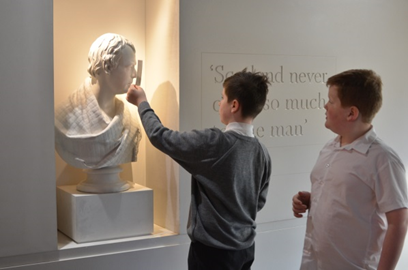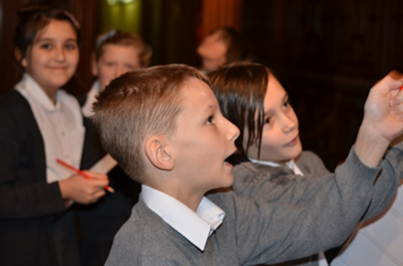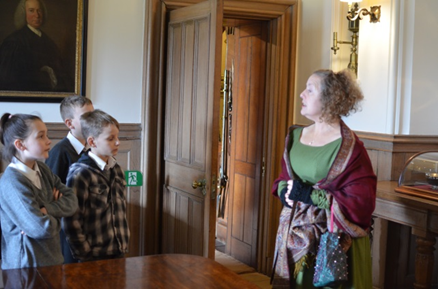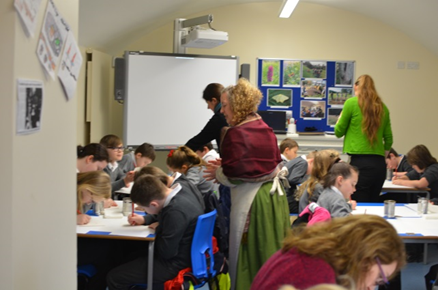The partners worked together to create an interdisciplinary project that would make the most of this fantastic historic building and local resource. The project provided a genuine context for learning languages across the curriculum. The pupils were involved in designing the project from the outset, which motivated and engaged learners.
The rich context offered by Abbotsford House allowed learners to explore several areas of the curriculum in addition to languages.
Pupils visited Abbotsford House for a series of three separate visits. Each visit was tailored specifically to the needs of the class. Pupils learned about the life and times of Sir Walter Scott, his journey to become a world famous bestselling novelist and the ways in which he influenced Scottish national identity and international awareness of Scottish culture around the world.


During the first literacy-focused session, pupils were encouraged to take notes describing their favourite artefacts and features. In a follow-up poetry workshop, they used these notes to create list poems about their experience of Abbotsford House.


The second visit was led by a costumed storyteller who treated the pupils to traditional stories based on objects in the house. In the follow-up workshop, they created their own bookplates based on the stories using quills, ink and stamps.


The third visit focused on the Visitor Centre at Abbotsford and an exhibition on Scott’s life. Pupils explored the artefacts on show and considered the provision for international visitors including the availability of information in different languages.
The pupils responded very positively and were extremely enthusiastic about their visits to Abbotsford House and to the workshops:
“My favourite part was touring the amazing rooms at Abbotsford House and using what I saw to inspire me.” (P6 pupil, Burgh Primary School)
Outcomes
Pupils used what they had discovered and learned during the visits to create a timeline of Walter Scott’s life. Here they investigated the differences between life at that time and life in the present day, using a variety of primary sources.
They also created interactive games, discussed planning and budgeting for a visit to Abbotsford House, and identified French vocabulary to describe some of the artefacts in the house. At the end of the project, children in P6 were given the opportunity to share their learning with P5 pupils. They presented their work at a variety of stations in the Learning Centre at Abbotsford House and encouraged younger pupils to explore new French vocabulary based on artefacts on show within the house.
Parents and pupils were then invited to Abbotsford where they were treated to a dramatic performance in the historic rooms with pupils playing the voices of Scott’s objects and bringing them to life. Four pupils were given the opportunity to lead groups and they acted as tour guides and leaders for the day.